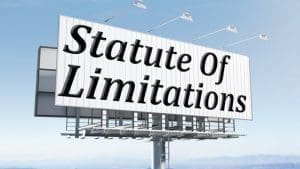How Financial Institutions Can Ensure Legal Compliance
Legal and compliance teams in financial services face a unique challenge: the regulatory landscape never stops evolving. Between Gramm-Leach-Bliley Act data privacy (GLBA) requirements, evolving Unfair, Deceptive, or Abusive Acts or Practices (UDAAP) guidance, and regulatory scrutiny from the FDIC, OCC, Federal Reserve, NCUA, and CFPB compliance feels like a moving target.
The consequences of poor compliance risk management are dire. A single compliance misstep can trigger consent orders, civil money penalties, or public enforcement actions that damage your institution’s reputation for years. And contrary to what some believe, size offers no protection — regulators scrutinize community banks too.
So how do legal and compliance teams manage this workload without burning out? The answer lies in building systematic processes that scale with regulatory demands. Here are six strategies that transform compliance from reactive scrambling into proactive risk management.
Six Strategies for Effective Compliance Management
- Track enforcement actions
Enforcement actions offer a valuable early warning sign. When the CFPB fines a bank for UDAAP violations in overdraft practices, or the OCC issues a consent order for Bank Secrecy Act/Anti-Money Laundering (BSA/AML) deficiencies, they’re signaling enforcement priorities.
Start by monitoring enforcement actions from your primary regulators. For each action, note the regulator, targeted area (fair lending, anti-money laundering/countering the financing of terrorism (AML/CFT), data security), and the specific deficiency cited.
Then take action:
- Run an impact analysis. How does the enforcement action impact your financial institution? Could it impact your customers or members?
- Review internal controls. Do you have the right controls for the cited risks? Are those controls effective?
- Review your policies and procedures. Close any gaps the enforcement action reveals.
- Train your team. Make sure relevant staff understand both the regulatory expectation and your institution’s approach.
For example, let’s say you see an enforcement action from the FDIC on vendor management. The specific deficiency was that the institution failed to conduct annual critical vendor reviews and had no process to monitor vendor compliance.
Once you know the FDIC is actively examining vendor management, you know you need to pay close attention to your third-party risk management program. Specifically, you need annual reviews and an ongoing monitoring process. This offers a roadmap for self-assessment and improved compliance.
- Measure what matters with compliance risk indicators
Don’t wait for an exam to discover compliance gaps. Track leading indicators that signal potential problems before they escalate.
Your specific metrics will vary based on risk appetite and regulatory requirements, but consider monitoring:
- Consumer complaints – Track volume by product, service, and location, plus response and resolution times
- Findings resolution – Monitor open findings, repeat issues, and average time to remediate
- Compliance training – Measure completion rates and post-training assessment scores
- Vendor compliance – Number of critical or high-risk vendors, vendor consumer complaints, previous regulatory actions, etc.
- Specific regulation metrics – Home Mortgage Disclosure Act (HMDA) accuracy rates, Community Reinvestment Act (CRA) assessment area coverage, fair lending disparity ratios, etc.
- Build a repeatable change management process
Regulatory changes happen constantly. Without a change management process, a new regulation drops, different people handle it in different ways, key compliance items are missed, and documentation is inconsistent. When an examiner asks, “How did you implement this?” no one can reconstruct what happened.
Rather than reinventing your response each time, create a standardized change management framework. This is also a required component for your institution’s compliance management system.
Your process should include:
- Change identification: How you’ll monitor regulatory updates
- Impact assessment: Who evaluates how changes affect your institution
- Implementation plan: Timeline, responsible parties, and resource allocation
- Testing and validation: How you’ll verify effective implementation
- Communication: How you’ll inform affected departments
- Documentation: What records you’ll maintain for examiners
- Draft effective policies and procedures
Effective policies and procedures provide your compliance and legal team with practical guidance. Strong policies are clear, specific, and accessible to employees.
Ensure your procedures provide step-by-step instructions on how employees complete specific compliance tasks. Be sure to review your documentation annually, but also trigger reviews when regulations or internal processes change.
- Document everything
Legal professionals and compliance officers know the importance of good documentation. When a regulatory exam or audit comes around, you don’t want to be caught off guard and scrambling to find the right evidence. Regulators want to see proof of compliance.
Be ready to provide evidence of:
- Board and management oversight activities
- Risk assessments and their findings
- Policy and procedure reviews and approvals
- Training delivery and completion
- Testing and monitoring results
- Corrective action implementation
Where possible, create standardized documentation to save time and ensure consistency across your compliance program.
- Invest in compliance management software.
Performing all these activities requires a lot of time, effort, and manual work. But it doesn’t need to be a big burden. The right compliance management software simplifies the process for compliance and legal teams. You can identify regulatory changes, implement compliance controls, train staff, track activities, and document properly.
The right platform also demonstrates your institution’s compliance commitment to examiners. When you can instantly pull up policy versions, training records, or risk assessments, you signal a mature compliance culture.
Solutions built specifically for financial institutions, like Ncontracts, come with regulatory expertise baked in. You’re gaining a partner that understands regulatory expectations and requirements.
Legal compliance in financial services doesn’t have to mean constant firefighting. By building systematic processes for tracking regulatory changes, measuring your performance, and documenting your efforts, you transform compliance from a burden into a competitive advantage.
Bio:
Ncontracts empowers banks, credit unions, mortgage companies, fintechs, and wealth management firms to confidently manage risk — including enterprise, compliance, and third-party risk — in a complex, rapidly changing financial landscape. Our integrated suite of cloud-based solutions combine deep industry expertise, powerful technology, and rich data to help organizations strengthen governance, protect operations, and identify opportunities for growth. Today, nearly 5,000 financial services organizations trust Ncontracts to make risk and compliance management a strategic advantage.




















